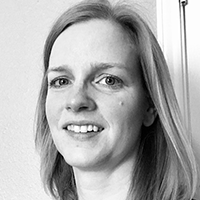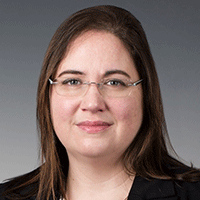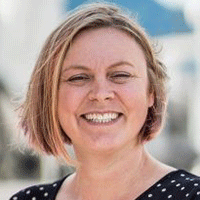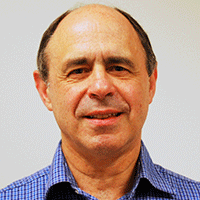
Amanda Raddatz Bopp
Organization: DNV
Business Title: Principal Geoscientist
Bio: Amanda Raddatz Bopp joined DNV in 2022 as a Principal Consultant in the CCUS Venture, where she provides CO2 storage expertise to support the development of CCUS projects across the globe. This ranges from risk management, permitting assistance, recommended practices, and technical advisory. Amanda brings 15 years of industry experience as a Geologist, with the past 8 years focusing on Carbon Management. Her experience comes from Battelle, Oxy, and Shell, where she held various roles in exploration, production, EOR, CO2 sourcing, and project management. Amanda has a Master’s degree in Geology from the University of Illinois, Urbana-Champaign.
Presentation Title: Common Questions in CCUS
Carbon Capture, Utilization and Storage has been attracting attention from oil & gas operators, industrial facilities, startups, and policy advisors. As CCUS emerges as a major industry across the globe, oil & gas operators are well positioned to take on a significant role in this space. When learning to apply the traditional skillset of an operator to a CCUS project, some key questions get repeated. Lifecycle project cost, schedule, permitting, infrastructure planning, political and social setting, and risk management are at the forefront when developing new projects. This talk will address common planning and operational concerns in CCUS projects.

Kerryanne Leroux
Organization: Energy & Environmental Research Center
Business Title: Principal Engineer, CCUS Systems Lead
Bio: Ms. Kerryanne Leroux, Principal Engineer at the Energy & Environmental Research Center (EERC), holding a B.S. and an M.S. in Chemical Engineering. She currently leads teams of scientists and engineers who focus on integrating carbon capture and storage (CCS) systems with fossil energy, such as enhanced oil recovery (EOR) and coal-generated electricity, as well as renewable energy. She has direct experience with assessment of CO2 capture technologies and transportation; implementing and evaluating near-surface and downhole monitoring concepts for geologic CO2 storage; and techno-economic evaluation of CCS applicability for state and federal CO2 reduction incentive programs.
Presentation Title: First Commercial CCUS Projects in North Dakota
The first landmark permits coupled with the prudent regulatory environment and excellent geology and stacked storage potential of North Dakota have resulted in a broad range of commercial carbon capture, utilization, and storage (CCUS) projects being advanced in the region. The dozens of projects lining up include capture from coal-fired power generation; ethanol production; industrial processes; and natural gas compression, processing, and generation. Each application is driven by project-specific business cases and varying combinations of incentive programs. Each of the commercial CCUS projects being advanced boosts investment in the region and provides a means of significantly reducing the carbon intensity of the energy or products produced.
In addition, the University of North Dakota Energy & Environmental Research Center (EERC) leads the Plains CO2 Reduction (PCOR) Partnership Initiative, with support from the University of Wyoming and the University of Alaska Fairbanks. This initiative, funded by the U.S. Department of Energy (DOE), the North Dakota Industrial Commission, and participating member organizations, is accelerating the deployment of CCUS within the PCOR Partnership Initiative region. CCUS is the key technology option to manage carbon emissions while allowing the full range of economic and societal benefits derived from fossil fuels.

Jenny McCahill
Organization: Carbon Engineering/Oxy
Bio: Jenny joined CE in 2014 with more than 10 years' experience on the development of chemical processes for industrial applications. Jenny was a key contributor during the commissioning and early stage operations of the DAC and AIR TO FUELSTM pilot facilities, and led optimization work of current technology and investigations of next generation technologies for process integration. Jenny is now part of the Project Management Team for the development of CE’s first industrial-scale plant.
Presentation Title: Direct Air Capture – Commercial Deployment
Since 2009, Carbon Engineering (CE) has been developing an industrially scalable DAC technology, which can remove CO2 directly from the atmosphere at an affordable price point and at industrially relevant scales. The captured CO2 can be safely stored deep underground to deliver permanent carbon removal. CE, Oxy Low Carbon Ventures and 1PointFive are now focused on bringing this technology to commercial scale with multiple large-scale plants underway around the world. The first facility to use CE’s technology is expected to be operational in late 2024 in Texas. The technology and development behind this process will be described.

Ron Beck
Organization: AspenTech
Business Title: Senior Director, Industry and Product Marketing
Bio: Ron Beck has 40 years experience in the oil and gas industry, and for the past 15 years has worked for AspenTech. His current role relates to applying digital technology to sustainability pathways for global oil and chemical enterprises.
His work has taken him to almost every major process manufacture and oil producer globally. His first experience in the sustainability area dates back to the 1970s when he was involved with processes for pyrolysis of waste materials and development of global energy models. He has a degree in geology and biology from Princeton University.
Presentation Title: Decision Support for Balancing Carbon Mitigation and Asset Optimization
Upstream companies are scrambling to improve their ability to measure, track and report on greenhouse gas emissions in oil and gas fields and processing facilities. The approach today is largely semi-manual, with spreadsheets that draw from a combination of data sources, indirect calculations, estimates and remote sensing. This approach is auditable by governments and investors, but only just. The biggest drawback to this approach, of course, is the time it takes to roll up the information across an enterprise, reducing its value in providing timely, actionable information to identify and solve "bad actors" that leave a company exposed from a carbon emissions viewpoint.
This presentation will discuss how a combination of modeling, analytics, and advanced visualization can provide a near real time picture of the performance of an upstream asset, can identify actions that can reduce energy and water use and reduce greenhouse gas (GHG) emissions, and can ensure that consistent data is being used by different analysts and decisionmakers.
The presentation will show a technology pathway and an overview of the following technical elements:
- Hydrocarbon mass balance model to trace losses (fugitive emissions) in the asset
- Energy model to measure and optimize energy and water use in the upstream asset, benchmark among equipment across the asset and multiple assets, and identify bad actors
- Systemwide model to identify where capital and operating spending will have the biggest impact on carbon emissions and production
- Advanced process control (APC) for upstream, and its surprisingly large impact on energy use, yield and uptime in the asset
- Predictive analytics for uptime, which avoid unplanned releases of methane and emissions
Biography: Ron Beck has 40 years experience in the oil and gas industry, and for the past 15 years has worked for AspenTech. His current role relates to applying digital technology to sustainability pathways for global oil and chemical enterprises.
His work has taken him to almost every major process manufacture and oil producer globally. His first experience in the sustainability area dates back to the 1970s when he was involved with processes for pyrolysis of waste materials and development of global energy models. He has a degree in geology and biology from Princeton University.